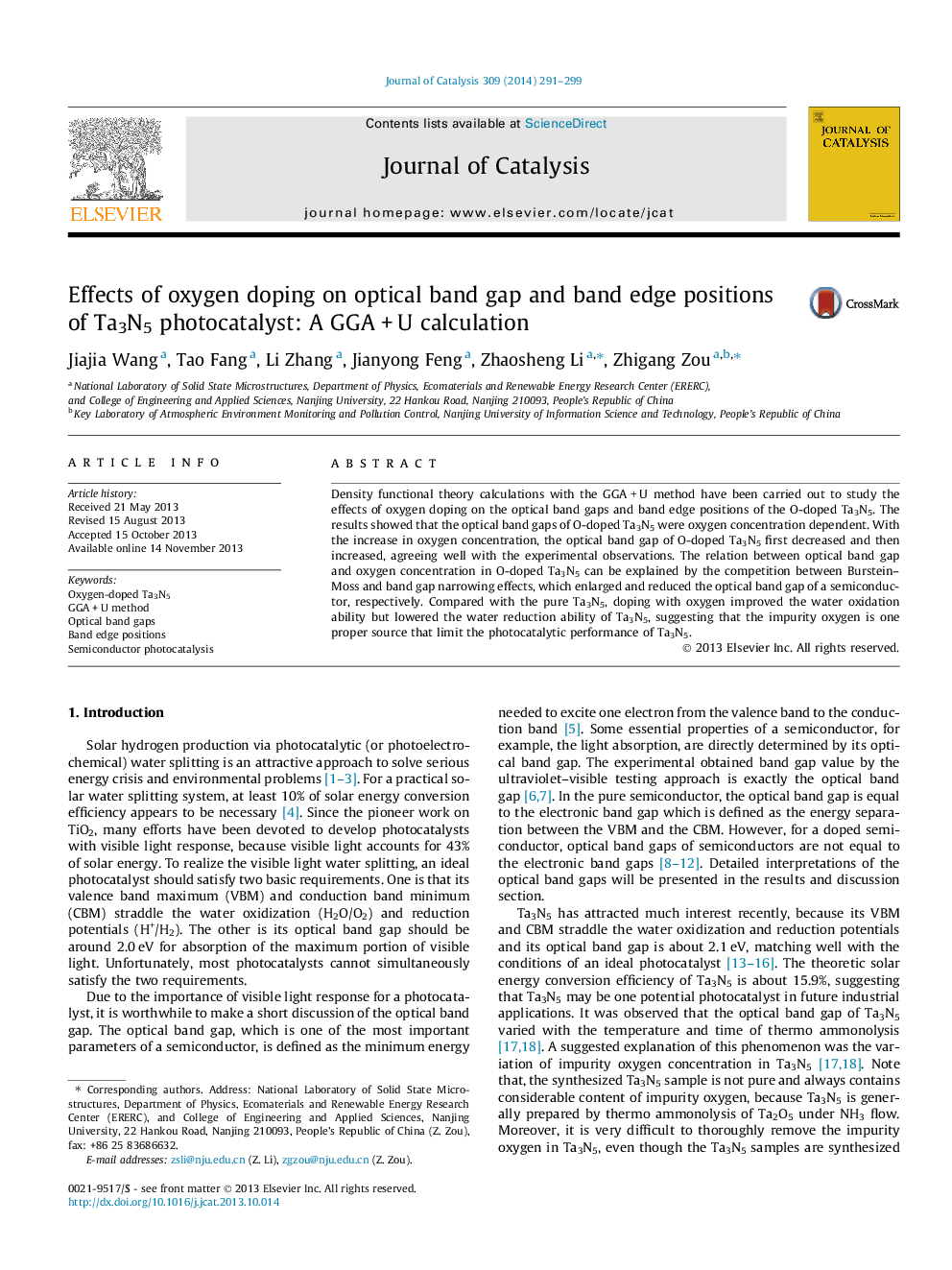| Article ID | Journal | Published Year | Pages | File Type |
|---|---|---|---|---|
| 61119 | Journal of Catalysis | 2014 | 9 Pages |
•Optical band gaps of O-doped Ta3N5 are oxygen concentration dependent.•Non-monotonic optical band gaps variation is the result of BM and BGN effects.•Oxygen doping affects the water redox ability of Ta3N5.•Oxygen is one proper source that limiting the photocatalytic performance of Ta3N5.
Density functional theory calculations with the GGA + U method have been carried out to study the effects of oxygen doping on the optical band gaps and band edge positions of the O-doped Ta3N5. The results showed that the optical band gaps of O-doped Ta3N5 were oxygen concentration dependent. With the increase in oxygen concentration, the optical band gap of O-doped Ta3N5 first decreased and then increased, agreeing well with the experimental observations. The relation between optical band gap and oxygen concentration in O-doped Ta3N5 can be explained by the competition between Burstein–Moss and band gap narrowing effects, which enlarged and reduced the optical band gap of a semiconductor, respectively. Compared with the pure Ta3N5, doping with oxygen improved the water oxidation ability but lowered the water reduction ability of Ta3N5, suggesting that the impurity oxygen is one proper source that limit the photocatalytic performance of Ta3N5.
Graphical abstractFigure optionsDownload full-size imageDownload high-quality image (103 K)Download as PowerPoint slide
